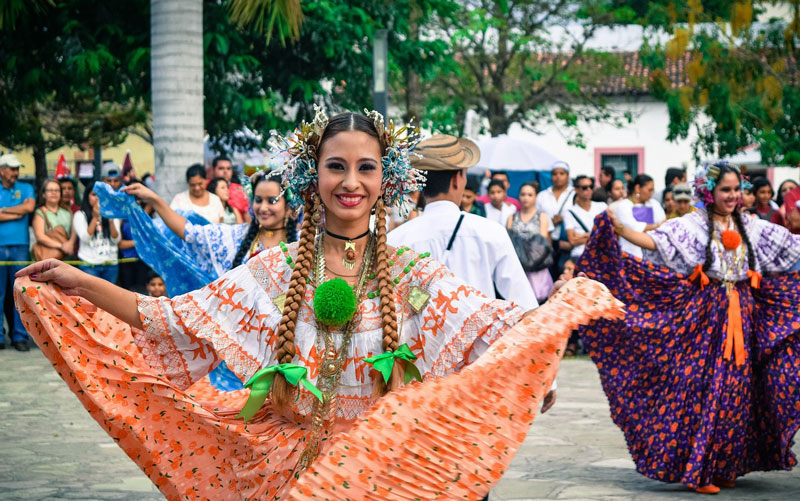If you're a Globe Aware volunteer who is a natural-born adventurer with a more flexible annual leave, you've probably been saving up and looking forward to the end of summer. You'll be thrilled to learn that one of Latin America's top tourist destinations is in fact best experienced in the upcoming off-season.
Why Fall Is The Best Time To Visit This Tropical Latin American Country
August 30, 2023
Travel off Path
If you're wary of crowds and you're a solo traveler with a more flexible annual leave, you've probably been saving up and looking forward to the end of summer, when the school holidays will end, and ticket prices will have dropped significantly.
If this applies to you, and on top of that, you're a natural-born adventurer, you'll be thrilled to learn that one of Latin America's top tourist destinations is in fact best experienced in the upcoming off-season - or how it is known locally, the green season.

Come rain or come shine, here's why the increasingly popular Costa Rica is best experienced in the fall:
First Of All, Why Is Costa Rica So Great?
Costa Rica is a small country in the Central American isthmus, bounded by the Caribbean Sea to the Northeast and the Pacific to the Southwest, for a combined coastline of 800 miles.
It's no wonder the country's name literally translates from Spanish as 'Rich Coast'.
With a relatively high quality of life and very few instances of political unrest, as observed in Colombia, Peru, Brazil, and the like, it has been historically perceived as a source of stability for the geopolitical region, as well as an incredibly safe country.
Political stability aside, why exactly is the tropical 'Rich Coast' such an incredible fall destination?
There May Be More Rain, But There Are Also Less Crowds
As reported by Travel + Leisure, while a majority of tourists pick the 'dry' season - roughly between December and April - to visit, the best time to explore Costa Rica and avoid the surging crowds is roughly May through November.
Comprising both summer and fall in the Northern Hemisphere, this period often sees a higher level of precipitation across Costa Rica due to the build-up of humidity and tropical storms, but it also sees a sharp drop in the number of tourists and consumer prices.
Though this hardly sounds encouraging, it doesn't mean it rains nonstop in Costa Rica throughout autumn.
The risk is notoriously higher compared to wintertime, but rainy days are interspersed with sunny breaks and warm, pleasant weather:
According to TUI, a travel agency based in Great Britain, there is a 25% chance of a 'perfect' sunny day in Costa Rica for the month of September and a 75% chance of a mixture of both sunshine and clouds, with an average precipitation of about 3 inches.
October is similar, with a 22% chance of a cloudless sunny day, so yes, sunny intervals are indeed fewer, but temperatures remain in the mid-70s to low 80s°F, and the waters, particularly along the Caribbean coast, remain considerably warm year-round.
Undisturbed Nature
Fall is best for traveling in Costa Rica as other tourists will deliberately avoid the green season due to whatever chance it may rain, even if occasionally.
This means you'll have all the paradisaical beaches, quaint historical towns, and gorgeous nature trails (almost) all to yourself.
On sunny days, you are free to relax on one of the country's pristine Caribbean or Pacific beaches, going for a swim or simply burying your feet in the golden sands and soaking up the tropical atmosphere.
Should it rain, and you're averse to getting wet whilst exploring a verdant trail, rest assured you'll never run out of exciting things to do, as Costa Rica has so much more to offer than its abundant nature, especially if you're a guest at Peninsula Papagayo.
As Costa Rica's best-equipped resort zone, it is jam-packed with all-inclusive hotels, guesthouses, and youth hostels, with affordable overnight rates this autumn.
Other than the undisturbed nature, the cheaper and less crowded hotels are part of Costa Rica's green season charm:
It Is Cheaper To Visit In The Off-Season
Costa Rica is easily one of the most expensive countries in Latin America, and if you're on a stricter budget, especially in this post-crisis climate, traveling in the green season is your best bet at experiencing Costa Rica thoroughly without breaking the bank.
With prices starting at just $97 for a Standard Room at Villa del Sueño, a well-frequented and well-reviewed three-star hotel in Playa Hermosa, and an even-cheaper $85 for Villa de Sol, located a stone's throw away from the region's unruffled beaches and seafront bars.
Based on data collected by other experts at Travel + Leisure, May and September, at the beginning and end of the green season, are the cheapest months for visiting Costa Rica.
Fly To Costa Rica From Several U.S. Cities
The primary airport serving the whole of Costa Rica is Juan SantamarÃa International, 12 miles from the national capital of San Jose. A major regional hub, it hosts nonstop flights from several North, Central American, and Caribbean airports.
This fall, you can travel to this tropical paradise from the following U.S. hubs:
- Los Angeles (with Alaska Airlines, Delta Air Lines, and United Airlines)
- Charlotte, Dallas/Fort Worth, Miami (with American Airlines)
- New York-JFK, Washington Dulles (with Avianca Airlines, JetBlue, and Volaris Costa Rica)
- Atlanta (with Delta Air Lines and Frontier Airlines)
- Fort Lauderdale, Orlando (with JetBlue and Spirit Airlines)
- Baltimore, Houston-Hobby (with Southwest Airlines)
- Houston-Intercontinental, Newark (with United Airlines)













